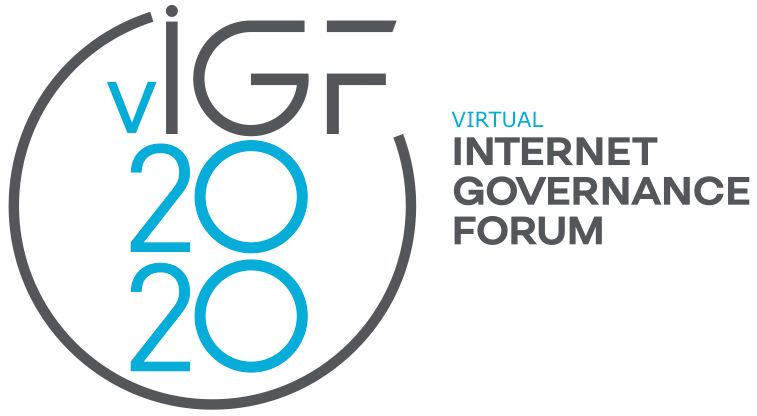Keeping us together: Internet infrastructure in emergencies
13 Nov 2020 16:10h - 17:40h
Event report
This session invited participants from different sectors, regions, and professional backgrounds to discuss the risks, opportunities, gaps, and possible solutions for Internet infrastructure issues in the context of emergencies.
Ms Beatriz Barbosa (Representative of Civil Society, Internet Steering Committee in Brazil) underlined that this session would focus on two main policy questions. First, how should different stakeholders keep up with the development of tools, technologies, and infrastructure that allow local communities to be resilient under severe circumstances. Second, what roles, gaps, bottlenecks, risks, and opportunities are present in the digital ecosystem as a whole when emergency situations occur.
Ms Alison Gillwald (Executive Director, ICT Africa) started by emphasising that physical and virtual Internet infrastructures are critical assets on both the local and global levels. The COVID-19 pandemic, and in particular the resulting lockdowns, has compounded digital inequality. According to Gillwald, the pandemic is, for the first time, compounding the effects of digital inequality for those who are unable to digitally substitute for economic activities, schooling, banking, and other essential activities. There is an urgent need to ensure that all communities have access to critical infrastructure. So far, only a small proportion of the people in Africa have been able to mitigate the effects of the pandemic through digital substitution during the lockdowns. Even though a lot of the physical infrastructure is already present across Africa, many countries within the continent still have low Internet penetration rates. In this regard, Rwanda, which has good physical infrastructure with 90% of its population covered by broadband, has less than 15% of its population with access to the Internet. These human development challenges have not been solved in both the country and the rest of the continent. First, people cannot afford access to the Internet. Second, they lack digital skills and devices. Just implementing supply measures is not enough in Africa. In situations such as the pandemic, contact tracing apps are not efficient because not enough people own enabling devices. Kenya and Nigeria have Internet penetration of only approximately 30%. Gillwald concluded by saying policymakers and private stakeholders should reflect on other ways to bring meaningful and effective access to the Internet in Africa instead of only providing physical infrastructure.
Mr Hajime Onga (Principal Deputy Director, ICT Strategy Policy Division of the Information and Communications Bureau of Ministry of Internal Affairs and Communications, Japan) highlighted that Japan is geographically prone to natural disasters, such as earthquakes, tsunamis, and volcanic eruptions. These events have the potential – and in particular over the last few decades – to adversely affect power supply and communications infrastructure. To address these issues, the Ministry takes three lines of action. First, it ensures that emergency communications are operational. Second, it invests in frequent improvements of the telecommunications network. Third, it expeditiously works on the recovery of the telecommunications network.
Mr Americo Muchanga (Chairman, Communications Regulator Authority of Mozambique) underlined that two cyclones hit Mozambique last year. In the following days, the entirety of the central region of Mozambique had no communication at all, even though the cyclone only affected the city of Beira. Even where there was telecommunication infrastructure in place, electricity blackouts hampered effective communication in the region. Emergency services and institutions like the National Institute of Disaster Management could not co-ordinate the situation very well. After this emergency, policymakers learned that satellite equipment must be available to enable communication. They are working on having such equipment available to prepare the country for future environmental events and disasters.
Mr Pablo Rodriguez (Executive Vice-President, DM-IST) mentioned that after Hurricane Maria in 2017, Puerto Rico endured 10 days without electricity and mobile communications. The main effort from DM-IST to help its customers was to renew their domain names for a year without prior payment. According to Rodriguez, it is important in such crises to ensure that their clients maintained their ‘cyber real estate’. The company recommends that operators worldwide hold responsibility for people affected by natural disasters and renew their domain names during crisis periods.
Ms Taís Niffinegger (Head of International Affairs, Anatel) stressed that during critical moments, Brazilian regulations provide support for the risk management of crucial telecommunications infrastructure, ensure the mandatory monitoring of the performance of telecommunications infrastructure and networks, and initiate preparedness and response measures for natural disasters. Measures to face disasters also include the installation of terminals or shelters in strategic locations free of charge for consumers. The lessons learned from recent natural disasters, including the one in Brumadinho, are that communication processes have been proven to be effective and fast via WhatsApp and that there should be a commitment from service providers to send daily monitoring reports along with network operating statuses to Anatel. Ms Niffinegger concluded by highlighting that there is still a need for more simulation exercises concerning the operational and response aspects to disasters.
Mr Demi Getschko (Board Member and CEO, NIC.br) underlined that Brazil has a strong stakeholder model that includes government, private sector, academia, and civil society in the Brazilian Steering Committee. Getschko mentioned that Brazil is among the most tolerant countries when it comes to Internet segment availability. This means that Brazil is less prone to experience issues related to reliance issues because Internet segments are very well distributed. In Brazil, there are a lot of small players and interconnections and this structure increases that availability of connection paths. The number of independent networks is high in Brazil. For the most part, Internet providers are small companies that employ 1 to 50 people maximum.
Related topics
Related event

